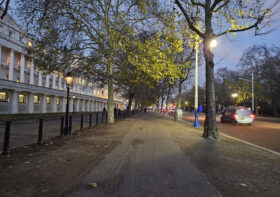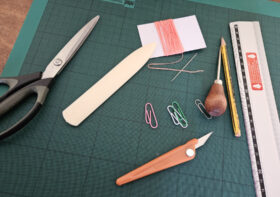On giving a poetry reading via Zoom
I’m very pleased to be taking part in an online reading this coming Friday 19th February at 1pm. Live Canon, the lovely publisher of my 2019 pamphlet Why? is hosting a series of weekly lunchtime readings, and this week it’s the turn of Adham Smart, Gillie Robic, Laura Theis and myself.
I’ve only done two readings before on Zoom, both very brief, and I find it a bit of an ordeal – BUT I’m learning. Here are a few of the issues I’ve been working through, which I thought I would share. (The issues go from ‘easy’ to harder’ by the way…)
Preparation
Of course the first thing is preparation. Going on past Live Canon lunchtime readings, I’m assuming the slot is about ten minutes. I’ve not had this confirmed but I know it won’t be less, and I also know from experience there’s rarely such a thing a too short reading. I’ll have decided on the poems to read, practised them and timed the whole set, including introductions. This is of course standard prep, so nothing different from an ‘in-person’ reading.
Set-up
I’ve learned this the hard way – get your laptop in place, use an ethernet cable if possible (rather than wi-fi) and check how you will look with the lighting that’s available. All at least 15 mins before it’s due to start. We’ve all done plenty of Zooms by now, and I’m admiring of people who’ve cracked this. I’m still learning, but I think the best bit of advice I’ve had is to light your face from the front. Also, check what’s behind you. A dressing gown hanging up on the door? A weird ‘shape’ that might be a printer or a cat basket or whatever – anything that’s going to distract people and have them thinking ‘what IS that thing?’ instead of meditating on one’s lovely poem – get rid of it, or change position. I open up ‘Photo Booth’ on my Mac and use that to check the view!
What to wear
You have to kind of get into the showtime mood, whatever that means for you, and it’s difficult when you’re all cosy at home! You know all that stuff about not wearing slippers when you’re working from home, standing up when taking a difficult phone call and so on – I think it’s the same if you’re giving a reading. I would say dress up a bit, even though no-one’s going to see what you’re wearing. And I definitely prefer to stand up, but failing that, sit forward rather than back.
Energy
Standing up isn’t just a psychological thing, it helps you breathe better, and you can allow the energy to flow through your body, which I think is the number one way you connect with an audience. Energy doesn’t mean bouncing about. It’s just means you’re alert and reaching out, you’re more likely to give an enjoyable reading. I have to warm-up beforehand: I do things like make stupid faces in the mirror, do a few jaw exercises, take some deep yoga breaths. It may sound over the top but I think it really helps the reading. (Yes I know, I’m setting myself up a bit here – I hope the actual reading lives up to my own advice!)
Engaging the audience
This must be the hardest thing on Zoom. I don’t have the definitive answer. One of the things I enjoy most about readings is the live audience – you can see how they’re reacting, you can address people through eye contact. And on Zoom? You’re lucky if you’ve spotted your friends, who could be on page 2 of the mosaic, you could be faced with a patchwork of faces and blank screens with names, some of which are something like ‘K’s laptop’. Everyone’s muted. Ugh!
The last reading I did, I had the poems on my computer screen so I could read off them and not keep looking down. When it’s just your head and shoulders visible, if people are looking at me (and hopefully they’re not all the time!) I want to seem as if I’m addressing them. I know I like this when I’m watching a poet read, and a number of people have told me they like it too. The downside to this strategy is, if you’re on a laptop, you might find your Word document (with the poems on) obscures the Zoom window, and with no ‘feedback loop’ you just have to carry on and trust people are there and haven’t all gone home, or that your connection has died and you haven’t realised, so you’ve been talking to yourself for ten minutes. Another way might be to pin your poems on the wall above your screen, which come to think of it might work better as you’ll be looking at a point just above the camera. OK now I’m overthinking things, and making myself more anxious…
You might find points these useful, or you may disagree – if you have any tips to add, please feel free to share. If you can do so before Friday lunchtime, even better!



All good tips, thanks Robin.
I’d add:
1. Make sure your whole face (at the least) is visible on camera so that people who use lip-reading cues can ‘hear’ properly.
2. As with live readings articulate clearly, don’t read too fast and don’t be afraid of pauses which give expression as well as allowing the meaning to be absorbed by listeners.
These are not only vital for deaf and hard of hearing listeners but for everyone else too.
Sorry I’ll have to miss yours – already booked for a regular one I go to on Zoom, based in Leeds, at exactly the same time! Hope I can hear you at another time …
Thank you Moira, good tips 🙂